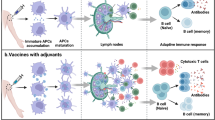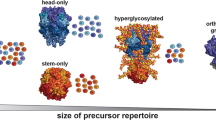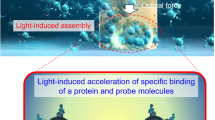Abstract
IN experiments carried out to elucidate the mode of action of depot-forming antigen adjuvants, such as alum and mineral oil, several attempts1,2 to mimic a slow release mechanism have been made by injecting daily doses of the antigen alone. The antibody responses obtained have, however, been found to be inferior to those stimulated by a single dose of the antigen with adjuvant. In these tests the quantity of antigen injected daily was relatively large; the total quantity given over a short time being arranged to be at least equal to a normal single dose given with adjuvant.
This is a preview of subscription content, access via your institution
Access options
Subscribe to this journal
Receive 51 print issues and online access
$199.00 per year
only $3.90 per issue
Buy this article
- Purchase on SpringerLink
- Instant access to full article PDF
Prices may be subject to local taxes which are calculated during checkout
Similar content being viewed by others
References
Holt, L. B., Developments in Diphtheria Prophylaxis (Wm. Heinemann, London, 1950).
McKinney, R. W., and Davenport, F. M., J. Immunol., 86, 91 (1961).
Herbert, W. J., thesis, Univ. Edinburgh (1964).
Cruickshank, R., Medical Microbiology, eleventh ed., 919 (Livingstone, Edinburgh, 1965).
Author information
Authors and Affiliations
Rights and permissions
About this article
Cite this article
HERBERT, W. Antigenicity of Soluble Protein in the Presence of High Levels of Antibody : a Possible Mode of Action of the Antigen Adjuvants. Nature 210, 747–748 (1966). https://doi.org/10.1038/210747a0
Issue date:
DOI: https://doi.org/10.1038/210747a0
This article is cited by
-
Vaccine Immunopotentiators of the Future
Clinical Pharmacology & Therapeutics (2007)
-
Functional genomics of cell elongation in developing cotton fibers
Plant Molecular Biology (2004)



